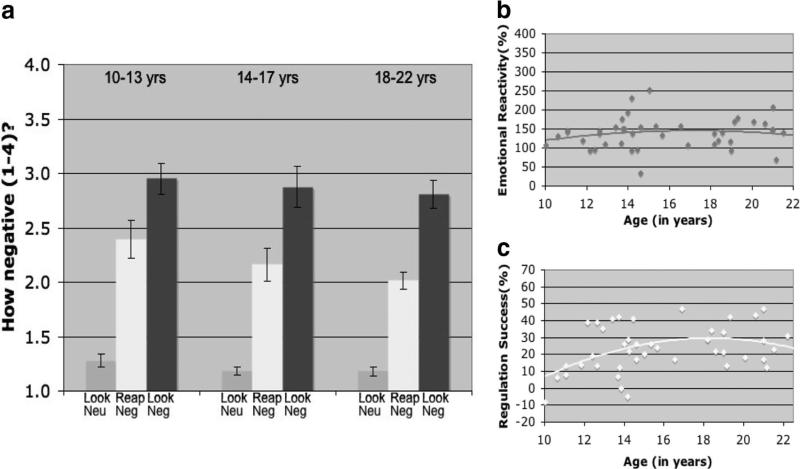Figure 3.
(a) Negative affect increased when looking (look) at negative (neg) stimuli in comparison with looking at neutral (neu) stimuli and was diminished by reappraising (reap) in Study 1. Analyses were performed using continuous measures of age, but for graphical purposes three age groups were constructed (each representing a 3- to 4-year period). Individual subject data points and the regression equations are plotted as a function of age for (b) emotional reactivity (emotional reactivity = –0.50 × age2 +] 17.34 × age – 4.28) and (c) regulation success (regulation success = –0.33 × age2 + 12.13 × age – 81.74). Neither linear (p = .33) nor quadratic (p = .35) effects of age were observed for emotional reactivity, but both linear (p = .03) and quadratic (p = .05) effects were observed for regulation success.

